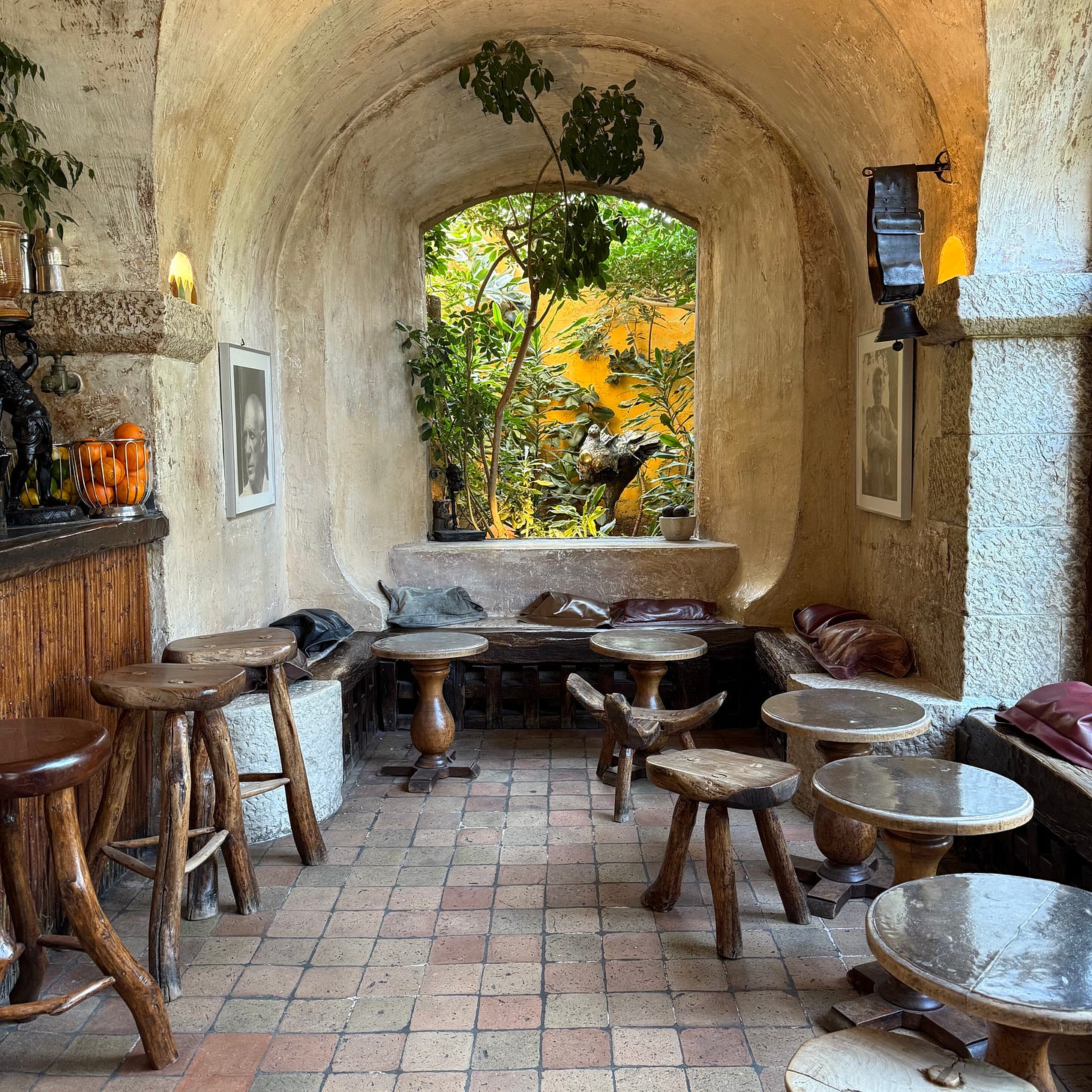La Colombe d'Or: A Timeless Icon of the French Riviera’s Artistic Legacy
An art-filled travel guide to the French Riviera, centered on a stay at La Colombe d’Or
Last weekend, I checked into one of my favorite family-run hotels in the world: La Colombe d’Or. Many of you have likely heard of it or have been lucky enough to visit this magical place. Originally opened in 1920 as a café bar, it later evolved into an inn, where the owner, Paul Roux—whose grandson still manages the property—would welcome local artists during the pre-war and post-war periods of the early-to-mid 19th century, often accepting artwork in exchange for a stay or a few meals. To give you an idea of how remarkable the art collection is, one of those artists was Picasso, whose work adorns the dining rooms, corridors, and even some of the guest rooms. One of the hotel’s most recognizable pieces is the Calder mobile by the pool that moves with the breeze. Though you may be sleeping under an original Picasso, the hotel itself remains intimate, homey and timeless—it truly feels as though it hasn’t changed in 100 years, because, in essence, it hasn’t.
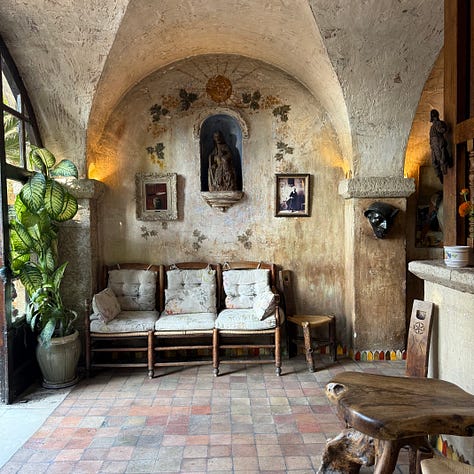

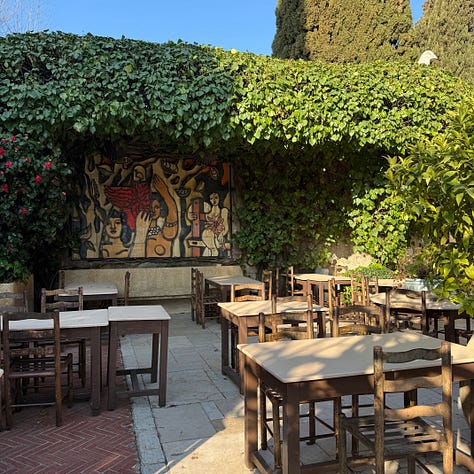
The hotel-restaurant benefits from an ideal location right at the bottom of the old village of Saint-Paul de Vence, just a 20-minute drive from the beaches of the French Riviera. Even if you’re not staying at the hotel, it’s well worth booking a meal here—I personally prefer lunch to fully appreciate the property in the daylight.
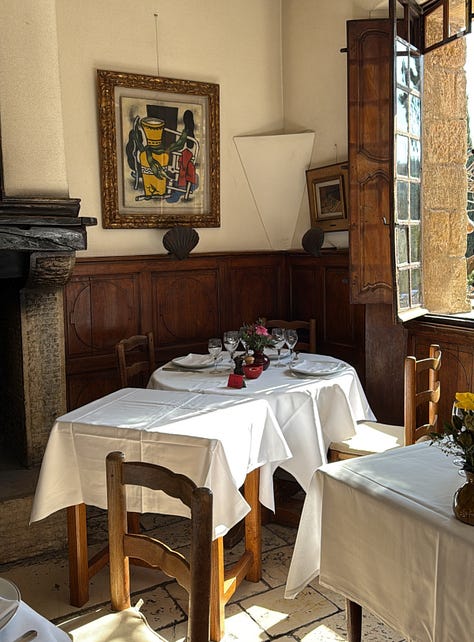
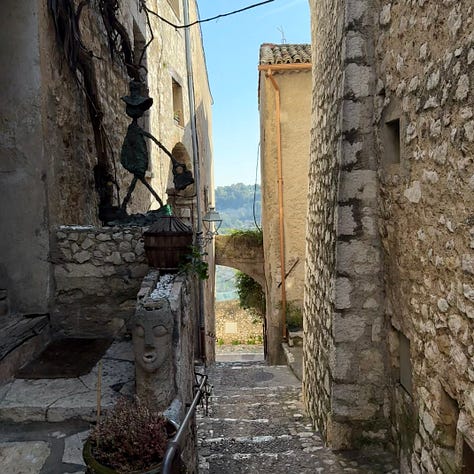
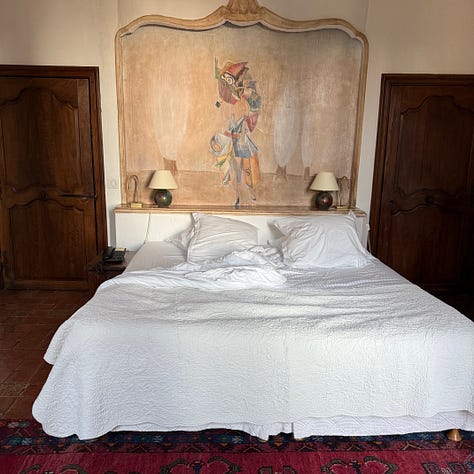
I love visiting Provence in the off-season. While this part of France is most idyllic from May through the summer months, I don’t mind the cooler temperatures and transitional weather. You still get sun, even though there’s a higher chance of rain (though I must admit I’ve always managed to be quite lucky here during the off-season, with comfortable temps and sunny days). Plus, nightly rates are more affordable during this time, which is an added bonus.
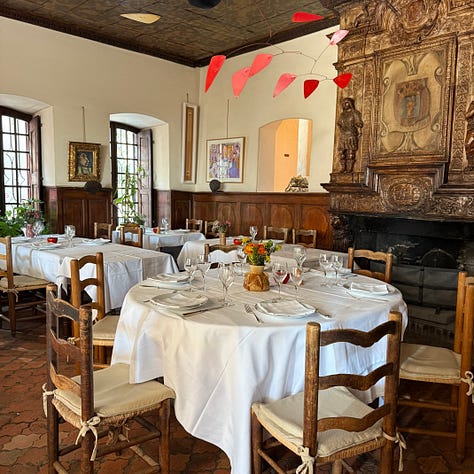
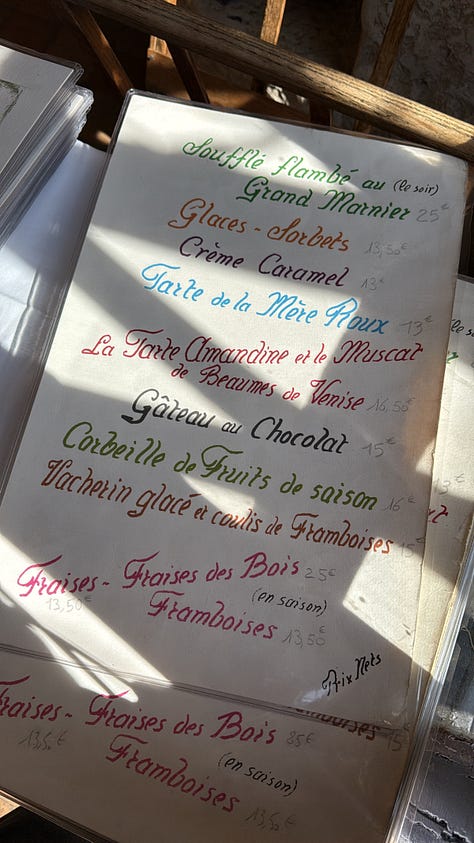
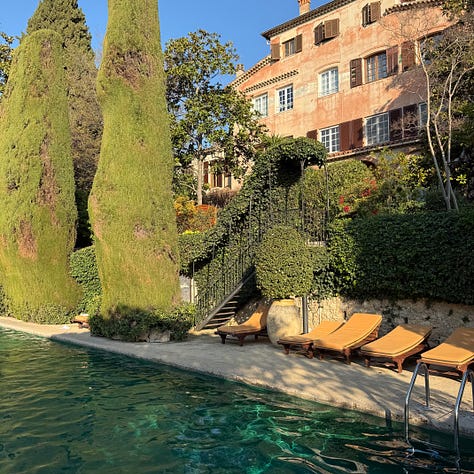
As it's not quite warm enough for the beach yet, visiting during the off-season provides an optimal opportunity to uncover what’s often overlooked in the summer months—the rich art heritage of the French Riviera. Without the distraction of lively beach clubs, the region's art culture shines in its seaside towns and medieval hillside villages. The French Riviera, and particularly Saint-Paul de Vence (thanks massively in part to Colombe d’Or), became a vibrant art hub in the early to mid-20th century, attracting pre-war and post-war artists from around the world.
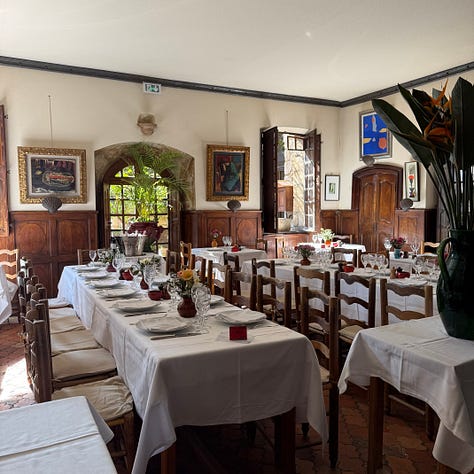
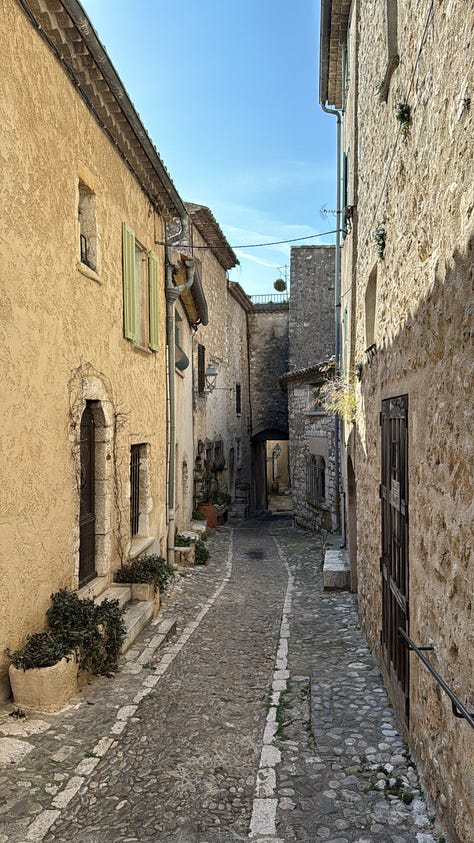
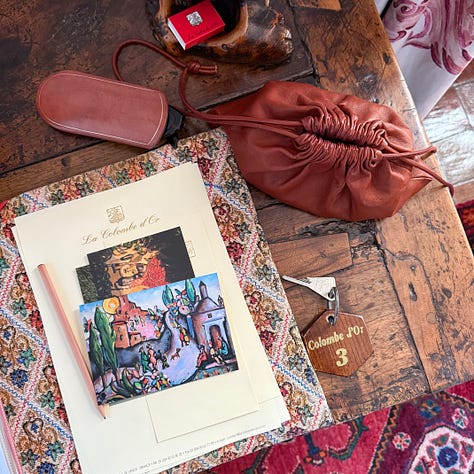
Initially, the area became a retreat for Impressionists and Post-Impressionists escaping the upheaval of World War I, including artists like Pierre-Auguste Renoir and Henri Matisse. It’s no surprise, then, that the region’s tranquil landscapes, warm Mediterranean light, and artistic community would later attract artists such as Picasso and Chagall to seek both creative freedom and refuge from the turmoil of World War II. This cultural boom helped establish the French Riviera as a hub for modern art, a legacy that continues to shape the region today, with works from these artists memorialized in their former homes-turned-museums, chapels, and other cultural landmarks throughout the area.
La Colombe d'Or is the perfect gateway for exploring these artistic landmarks scattered throughout the French Riviera and extending into the Provence countryside. So below, I’ve compiled a comprehensive art guide to the region, featuring some of my favorite art destinations showcasing the work of the great artists who lived here, all within a short drive (45 minutes tops!) from La Colombe d'Or.
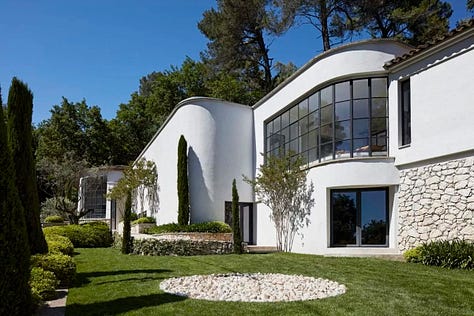
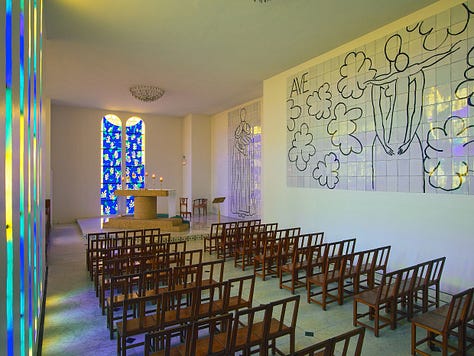
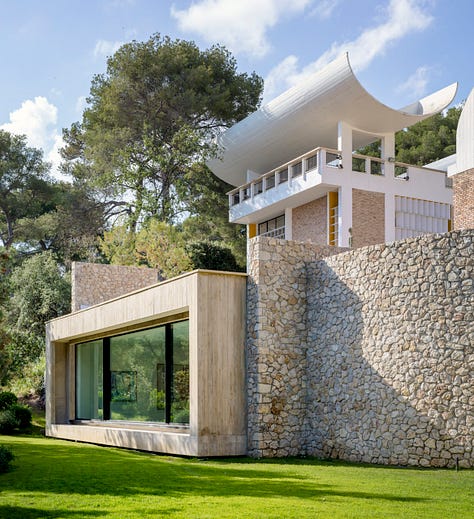
Fondation Maeght (Saint-Paul de Vence, walkable from La Colombe d’Or)
Housed in a building designed by José Luis Sert, Fondation Maeght is one of the most renowned private contemporary art foundations in France. Established in 1964 by art dealer Aime Maeght, the foundation showcases a remarkable collection of modern and contemporary art on its expansive grounds, with a particular emphasis on 20th-century artists such as Marc Chagall, Joan Miró, Alexander Calder, and Alberto Giacometti, among others with a deep connection to the French Riviera.
Fondation CAB (Saint-Paul de Vence, walkable)
Fondation CAB is a contemporary art foundation dedicated to showcasing cutting-edge works by international artists. Established by Belgian art collector and philanthropist Charles A. Beaulieu, the foundation is housed in a modernist building just down the road from Fondation Maeght. The space is dedicated to contemporary art, with a particular focus on sculpture, installation, and multimedia works. Surrounded by the rich artistic history of Saint-Paul de Vence, Fondation CAB continues the village's tradition of fostering artistic innovation and dialogue.
La Chapelle Folon (Saint-Paul de Vence, walkable)
La Chapelle Folon, located in Saint-Paul de Vence, is a hidden artistic gem transformed by the Belgian artist Jean-Michel Folon. Originally a simple 17th-century chapel used by the White Penitents, Folon reimagined the space in the early 2000s, filling it with his distinctive mosaics, stained glass, and frescoes. His delicate, dreamlike style brings a sense of serenity and light to the chapel. Folon had a strong bond with Saint-Paul de Vence, a village long cherished by artists, and this chapel stands as his final work, completed shortly before his passing in 2005.
The Rosary Chapel (Vence, 5 minute drive)
The Rosary Chapel in Vence is a masterpiece designed by Henri Matisse in the final years of his life. Living in nearby Nice, Matisse developed a deep connection to the French Riviera. When a nun sought his help in creating a chapel, Matisse took on the project as a spiritual and artistic endeavor. Completed in 1951, the chapel features his stained glass windows, murals, and minimalist design, embodying his belief in art as a form of joy and peace.
Musée Renoir (Cagnes-sur-Mer, 15 minute drive)
Villa des Mimosas, once the home of Impressionist painter Pierre-Auguste Renoir, is now a museum dedicated to his life and work. Located in Cagnes-sur-Mer, Renoir moved to the villa in 1907, seeking relief from his rheumatoid arthritis in the region’s warm climate. The estate, surrounded by olive groves and overlooking the Mediterranean, became his final residence and a source of inspiration for many of his late masterpieces. Today, the Musée Renoir preserves his studio, personal belongings, and several original paintings, offering visitors a glimpse into the artist’s world and his deep connection to the Côte d'Azur.
Musée National Marc Chagall (Nice, 25 minute drive)
The Musée National Marc Chagall, located in Nice, is dedicated to the visionary work of Marc Chagall, particularly his biblical-inspired paintings. Chagall, a Russian-French artist, moved to the French Riviera after World War II, drawn to its light and tranquility. He lived in nearby Saint-Paul de Vence, where he found inspiration for his dreamlike compositions filled with vibrant colors and spiritual themes. The museum, inaugurated in 1973 with Chagall’s involvement, houses his remarkable Biblical Message series, along with stained glass, mosaics, and sculptures. (Chagall lived in Saint-Paul de Vence until his death in 1985 and is buried in the local cemetery, where his grave remains a site of homage for art lovers.)
Musée Matisse (Nice, 30 minute drive)
The Musée Matisse in Nice, is dedicated to the life and work of Henri Matisse. Matisse moved to the French Riviera in 1917, initially seeking a warmer climate for his health, and soon became deeply connected to the region's vibrant light and landscape. He spent many years in Nice, living in the renowned Hotel Regina and creating some of his most iconic works. The museum, located in the historic Cimiez district, houses an extensive collection of Matisse’s paintings, drawings, sculptures, and cut-outs, offering visitors insight into his artistic evolution and his enduring bond with the area.
Musée Picasso (Antibes, 30 minute drive)
The Musée Picasso in Antibes, is housed in Château Grimaldi, a historic building that holds a special connection to Pablo Picasso. Picasso was invited to work in the château in 1946, during a time when he was living on the French Riviera. The building, once a royal residence, provided Picasso with a studio where he created a series of works, including paintings, drawings and ceramics. The seafront museum, which opened in 1966, features a significant collection of Picasso’s art, including pieces he made while living in Antibes. His time in the area marked a productive and transformative period, and the museum stands as a tribute to his creative connection to the region.
Picasso’s ceramics legacy: Musee National Picasso La Guerre et La Paix and Musée Magnelli (Vallauris, 30 minute drive)
After his time in Antibes, Picasso moved to Vallauris in 1948 and stayed through 1955. Inspired by Vallauris’ vibrant ceramics tradition, Picasso ended up creating a significant body of ceramic works here, alongside paintings, drawings, and sculptures. His relationship with the town is particularly tied to Madoura Pottery workshop (currently closed for renovations), where he spent much of his time experimenting with ceramics. The Musée National Picasso - La Guerre et La Paix, also in Vallauris, is dedicated to Picasso's monumental La Guerre et La Paix series, which he created during his time in the town. The museum also showcases these large murals and other works from this significant period. The Musée Magnelli nearby, which is dedicated to the work of Alberto Magnelli, an Italian painter who was a contemporary of Picasso. The museum also celebrates the connection between Picasso and the region, as Magnelli's work shares a similar modernist sensibility.
La Chapelle Saint-Pierre (Villefranche-sur-Mer, 45 minutes)
La Chapelle Saint-Pierre, also known as the Cocteau Chapel, is a small, picturesque chapel located in Villefranche-sur-Mer, on the French Riviera. The chapel is renowned for its striking murals, created by French artist Jean Cocteau in 1957. Cocteau, a multifaceted artist known for his work in film, poetry, and visual art, was inspired by the chapel's setting and its historical significance. His vibrant and imaginative frescoes adorn the walls, depicting scenes from the life of Saint Peter and incorporating elements of Cocteau’s signature surreal and mythological style.
Musée Jean Cocteau - Le Bastion (Menton, 45 minute drive)
For a more extensive look into the artist’s range of work, the Musée Jean Cocteau - Le Bastion is a charming museum located on the harbor wall in Menton, dedicated to the life and works of the iconic French artist. Situated in a historic 17th-century bastion overlooking the Mediterranean, the museum showcases a wide range of Cocteau’s creations, including drawings, ceramics, paintings and films. The museum’s collection reflects his diverse talents, offering insight into his unique blend of surrealism, poetry and modernist style.
Villa E-1027 (Roquebrune-Cap-Martin, 45 minute drive)
A bit different but worth it if you have the time! Villa E-1027 is a stunning modernist villa located in Roquebrune-Cap-Martin. Designed by the pioneering Irish architect Eileen Gray in 1929, the villa is a masterpiece of early 20th-century architecture, known for its innovative use of space, light, and materials. Gray, a prominent figure in the modernist movement, created the villa as a vacation home for herself and her lover, Jean Badovici, an architect and critic. The design emphasizes functionality and harmony with the surrounding landscape, featuring clean lines and minimalist interiors. Villa E-1027 is now a museum dedicated to Eileen Gray’s legacy, offering visitors a glimpse into her groundbreaking architectural vision and the art of modernist design.




